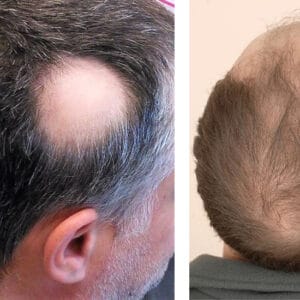Introduction to Dementia Treatment Innovations
The quest for effective dementia treatments has been a longstanding challenge in the medical community, with neurodegenerative diseases such as Frontotemporal Dementia (FTD) posing significant hurdles. Recent advancements in understanding the role of microglia, the brain’s immune cells, offer promising avenues for intervention. A notable development in this area is the work of startup companies like Modulo Bio, which has secured a .8 million investment from the Alzheimer’s Drug Discovery Foundation (ADDF) to advance its innovative dementia drug.
The Role of Microglia in Neurodegenerative Diseases
Microglia play a crucial role in the brain’s immune response, acting as the first line of defense against pathogens and injuries. However, in the context of neurodegenerative diseases, microglia can switch from a protective to a harmful state, contributing to disease progression. The concept of “reprogramming” these cells to maintain their protective function is at the heart of Modulo Bio’s approach. By targeting microglia, the aim is to create a therapeutic strategy that can potentially slow down or even halt the progression of dementia.
Understanding the Mechanism
To grasp the complexity of this approach, it’s essential to understand the mechanism by which microglia contribute to neurodegeneration. In healthy brains, microglia are involved in the clearance of amyloid-beta plaques and tau proteins, which are associated with neurodegenerative diseases. However, when microglia become overactive or dysfunctional, they can start producing pro-inflammatory factors that exacerbate neuronal damage. Modulo Bio’s treatment aims to “reprogram” microglia into a state that promotes neuroprotection, thereby creating a more favorable environment for neuronal survival.
Advancements and Investments
The investment of .8 million by the ADDF into Modulo Bio’s research underscores the potential of this innovative approach. This funding will be crucial for advancing the treatment into clinical trials, a necessary step towards making the therapy available to patients. According to recent research metrics, investments in dementia research have increased by 25% over the past year, with a significant portion dedicated to novel therapeutic strategies like microglia-targeting treatments.
Key Findings and Future Directions
Some key findings from preliminary studies on microglia-targeting treatments include:
– Reduced neuroinflammation: Studies have shown that targeting microglia can lead to a decrease in pro-inflammatory factors, thereby reducing neuroinflammation.
– Improved cognitive function: Preliminary data suggest that modulating microglia activity can improve cognitive outcomes in models of neurodegenerative diseases.
– Potential for combination therapies: Microglia-targeting treatments may be used in combination with other therapeutic strategies to enhance efficacy.
Looking Ahead: The Future of Dementia Treatment
As research into microglia-targeting treatments for dementia continues to advance, the potential for revolutionary changes in how we approach neurodegenerative diseases becomes increasingly evident. With investments like the one made by the ADDF, the path to clinical trials and, ultimately, to the development of effective treatments is paved. The journey ahead will require continued innovation, rigorous research, and collaboration among scientists, clinicians, and investors. As we move forward, the hope is that these efforts will yield breakthroughs that can improve the lives of millions affected by dementia worldwide.














